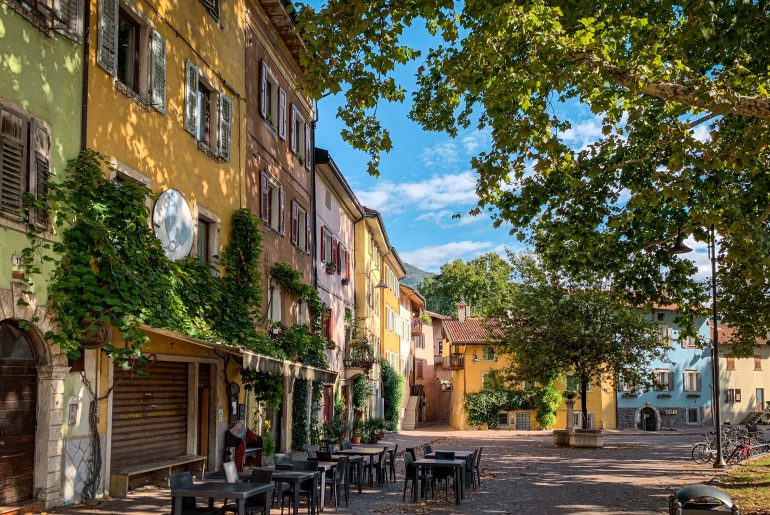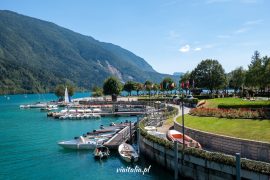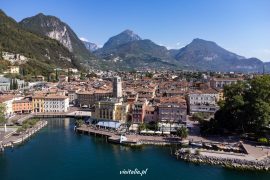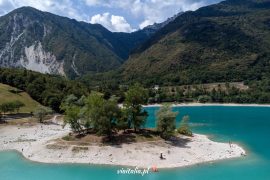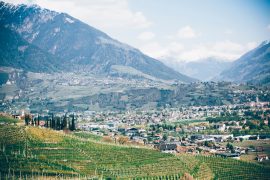Located in the northeast of Italy, picturesque Trento is a city strongly influenced by two different cultures. The city's turbulent history is evident in its architecture, but also in its society, and its unusual location attracts numerous tourists, not just ski enthusiasts.
Walking through the streets of Trento, it is not difficult to notice that this is not a typical Italian city. Yes, there are many elements characteristic of buildings erected by Italians, but strong Germanic influences clearly stand out here. This is not surprising, since these lands belonged to the Austrians until the end of World War I. Trento has only been part of Italy since 1918, and despite intensive efforts by Italians to arrange the city in their own way, it still gives a somewhat eclectic impression.
The city is the capital of the province of the same name. The region is an important winter sports center - every year ski enthusiasts from all over Europe and the world flock here to enjoy the benefits of the local slopes and satiate their eyes with the beauty of the Dolomites. Among foreign tourists, German-speaking visitors dominate - they are attracted by the fact that German is as popular here as Italian and is the primary language of communication at home for many people. The region also attracts many Poles, who visit the province of Trento especially during the winter holidays. What to see while in Trento itself? Check out our guide!
Attractions in Trentino
The province of Trento offers tourists a mass of attractions, especially related to mountain tourism and winter sports. The provincial capital itself, on the other hand, is mainly interesting architecture and modern educational facilities. The city is worth a visit both in winter and summer, offering numerous museums and monuments that delight tourists all year round.
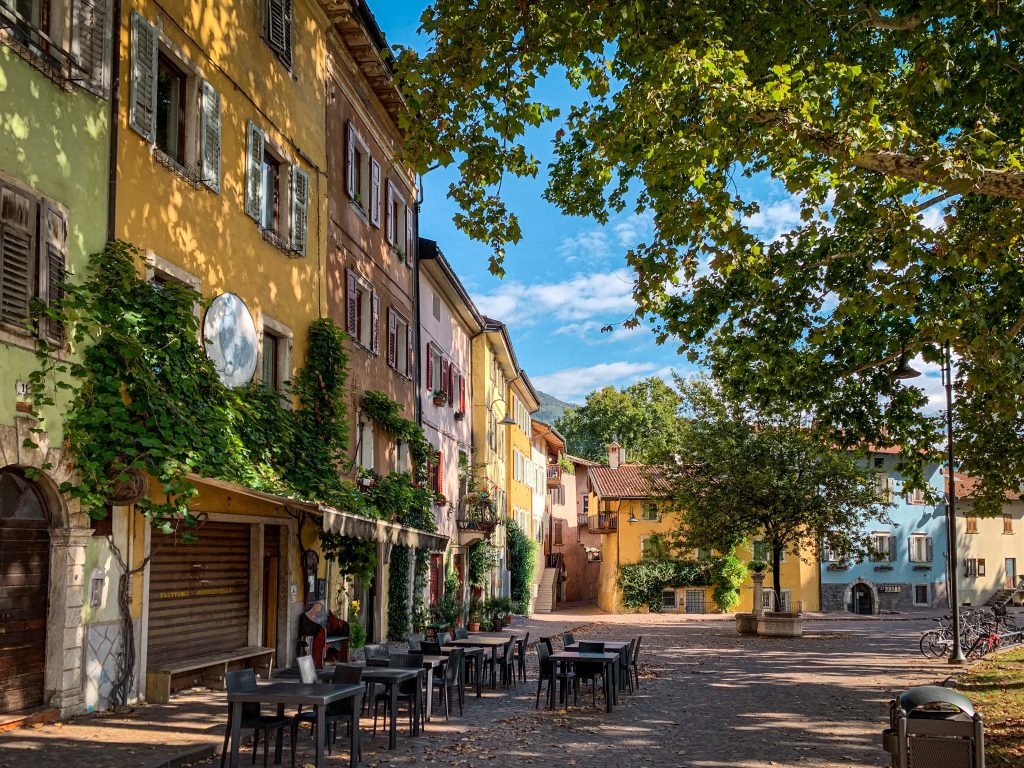
Piazza Duomo
Trentino's most popular square is the starting point for most tourist tours of the city. The square, which is the center of the old town, is surrounded by historic buildings in the Renaissance style, with facades richly decorated with frescoes. Adjacent to the piazza is the Romanesque-style built St. Virgilius Cathedral, erected at the turn of the 12th and 13th centuries. The building is famous for the fact that it was here that the resolutions of the Council of Trent were proclaimed in the 16th century.
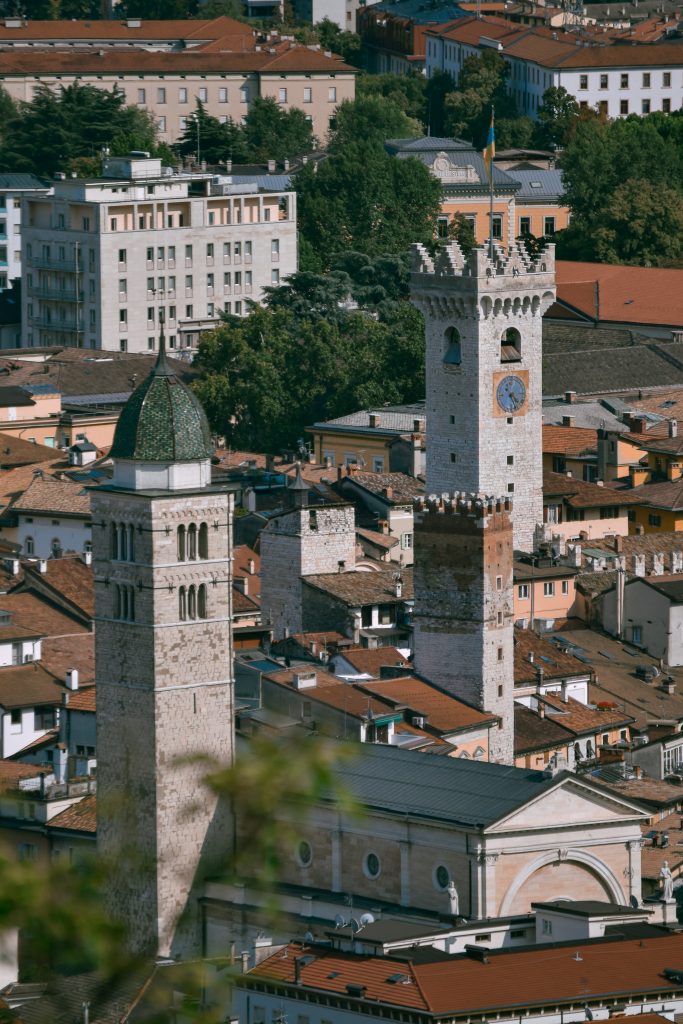
Also located in the Piazza Duomo is the Tridentine Diocesan Museum (Museo diocesano tridentino), housed in the Pallazzo Pretorio building. The museum houses numerous art and cultural exhibits from Trentino. The museum's exhibit includes works of art from between the 11th and 19th centuries. An admission ticket for an adult costs €7.
Buonconsiglio Castle
Until the early 19th century, this impressive castle was the seat of the princes of the bishops, and is now home to numerous works of art and archaeological exhibits. Construction of the castle began in the 13th century, and over several centuries the structure was systematically expanded, so that today's form of this building combines various architectural styles, among which the Romanesque and Baroque styles predominate. The buildings also include Torre Aquila - Eagle Tower located at the southern end of the castle. The interior of the tower is richly decorated with Gothic frescoes.
The castle is surrounded by a picturesque garden, which is a relaxing place for tourists and local walkers. The castle itself is open to the public, and various events and concerts are also held here. The building is situated on a hill, which offers a beautiful panoramic view of the nearby mountains.
The cost of a ticket to the castle is €10 for an adult, entry to the tower costs €2.5. Persons over 65 years of age pay less, 8€ (ID required). A preferential ticket price also applies to young people aged 15 to 26 - a ticket for tourists in this group costs only 6€.
MUSE Science Museum
The huge, several-story museum is located just a kilometer's walk from Piazza Duomo, on the banks of the Adige River. This impressive museum-like complex is dedicated to technology and science, as well as nature and sustainability. Each floor of the museum is subordinated to a separate theme - there are expositions devoted to primitive humans, dinosaurs, as well as glaciers. The building is very modern, with an innovative design - between each floor of the gallery there is a clearance, in which various installations are suspended, presenting interesting natural history exhibits. By virtue of its innovative character and the mass of stimuli offered, the museum is a great place not only for adults, but also - and perhaps especially - for children.
The museum hosts numerous workshops and events, and their schedule changes with the seasons. Interactive installations and attractions designed to stimulate the visitor's imagination - such as a tropical greenhouse, or figures that deceptively resemble living people - are also assets of the place.
The price of admission to the museum is €11 for an adult. The same price applies for a parent with a child under 18. Read more on the museum's official website.
Le Gallerie
Being already at the river, it is worth crossing the bridge to the other side to the neighborhood of Piedicastello visit the history museum. But like MUSE, this is no ordinary museum. Trento once again surprises tourists with its unusual and very innovative approach to exhibit displays. The local history museum is housed in two disused road tunnels that were in use until 2007.
Today the tunnels serve as exhibition galleries dedicated to the history of Trentino and the surrounding area. The museum consists of a white tunnel and a black tunnel. The former hosts various events, as well as temporary exhibitions. The second, meanwhile, exhibits permanent installations related to the region. Le Gallerie is a total of 600 meters of the city's history dressed up in an unconventional form that will appeal even to tourists who are not normally fond of history.
The museum is open Tuesday through Sunday from 10 am to 6 pm.
Railroad to Monte Bondone
For lovers of beautiful views, the cable car that connects the center of Trento to the mountainside is quite a treat. Monte Bondone. The starting station of the cable car is located behind the train station on the left bank of the Adige River, at 200m above sea level, while the upper station is located in the village of Sardagna, at 600m above sea level. In just 4 minutes, the cable car climbs 400m above sea level and shows tourists probably the most beautiful panorama that can be seen in Trentino.
The cable car is open daily from 7:00 a.m. to 10:30 p.m. However, it is worth noting that it does not run on those days when the wind is particularly strong - then a bus runs on this route. The cost of a ticket is 1-2€.
Giardino dei Ciucioi
Tourists with a car should definitely visit the hanging gardens of Giardino dei Ciucioi, located in Lavis, just 9 km from Trento. Built in 1850, the garden is the perfect place for romantic strolls for two. Filled with lush vegetation and unusual architectural elements, the garden is a truly fairytale-like picture. The hanging garden consists of a series of spiraling terraces that rise up to a building called the Gardener's House. The Giardino dei Ciucioi is a clash of architectural styles in a floral setting. Years ago, the garden was one of the region's main attractions, but suffered severe damage during the course of World War I and due to the 1921 drought. Today, work is still underway to restore the site to its former condition. The site is graced by numerous interesting buildings, such as an unfinished castle, the facade of a neo-Gothic church and a Renaissance loggia.
The facility is only open on weekends from 1:30 to 4:30 pm.
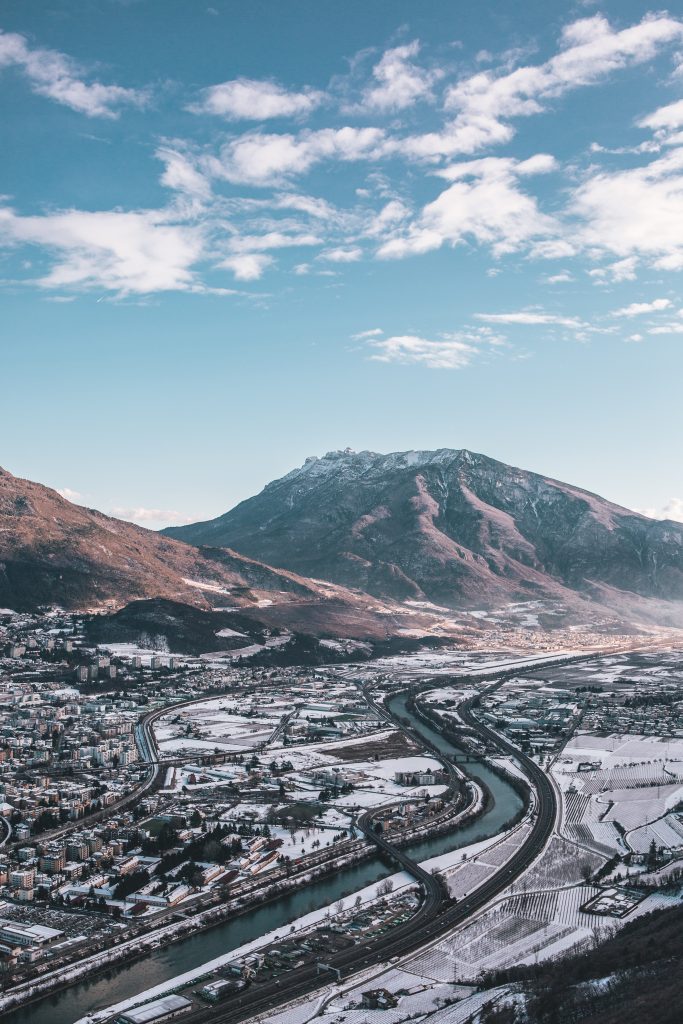
Getting there. How to get to Trento?
Access by car
The easiest way to get to Trentino from Poland is by car. Many tourists going for skiing do just that. However, it is worth noting that there may be problems finding parking in the city, especially in high season. Therefore, when booking accommodation in Trentino, make sure that the property also provides parking for guests. Ideally, if the hotel is close to the center, then most attractions can be visited without the need for a car.
Airplane flight
By far the fastest and cheapest way to get to Trento is by air, although not directly. The best course is to take Milan-Bergamo - Ryanair planes fly on this route. The carrier offers a direct connection Bergamo with as many as 5 cities in Poland - these are Wroclaw, Warsaw, Poznan, Krakow and Gdansk. Ticket prices start from a few tens of zlotys, and during numerous promotions organized by airlines they even reach symbolic amounts. From Bergamo airport you can travel further on board the bus company Flixbus - the connection is with a transfer in Verona. The total trip from the airport to Trento takes about 5-6 hours.
Weather in Trento
Since parts of the province of Trento are occupied by mountainous areas, the weather here depends largely on the altitude of the area. The city itself, however, has a mild, temperate climate, the features of which are warm summers and snowy winters. A characteristic feature of the region is partial cloud cover, which is present for most of the year. For less than half the year - from May to September - the average daily temperature here remains above 10ºC. Rainfall here is significant even during the peak summer season - from early spring to late autumn the average rainfall does not fall below 100mm per month. The average temperature here in July and August is about 18ºC. The highest frosts, on the other hand, are in January and February.
Cuisine of the region. What to eat in Trentino?
In Tridentine cuisine, as in architecture, the clash of Italian and Germanic influences is perfectly evident. A very popular dish in local restaurants, for example, is. canederli, which are bread balls flavored with smoked Tuscan ham, pancetta or other cured meat. The canederli includes eggs, cheese and milk, all served in a flavorful broth. A somewhat similar dish that is also enjoyed by the people of Trento is gnocchi, or Italian potato noodles. They are served with a variety of toppings and sauces.
One of the more popular soups in the province of Trento is the barley soup On smoked pork, with the addition of vegetables. The nutritious dish is great for warming up after madness on the slopes. A regional specialty is also Tyrolean goulash On beef, with lots of peppers. The people of Trento serve it in combination with polenta, a filling flour-based dish. In addition to pork and beef, venison is also popular in the province of Trento. In addition, the region is famous for its local cheeses and sausages, the most popular types of cheese here include Trentingrana and Vezzena. It is a good idea to taste local products, such as appetizers. An important part of Trentinian cuisine is, of course, native wines - the most popular varietals include Nosiola and Marzemino. While in a Tridentine restaurant, it's worth ordering a glass of local wine with dinner.
Accommodation in Trento
Trento has a wide range of accommodations, consisting mainly of apartments and hotels. Prices in the summer season start at about €55 per night for a double room with its own bathroom. If you're lucky, you can find an accommodation of good standard with a location in the center of the old town at the stated price. Tourists interested in staying in a hotel class facility with a minimum of four stars must prepare to spend at least €95-100 per night - this is the cost of a double room with a double bed and breakfast included in the price.
Prices are similar in the winter season. Apparently, however, many tourists are booking accommodations very far in advance - checking the availability of accommodations with a date set for early December, you can see that there are fewer available offers than in summer. Almost a year before December 2022, the popular booking portal displays a message that as many as 80% facilities in the selected time frame are no longer available. Wanting to get the best value for money from a rental property, it is therefore worth planning a trip to Trento months before you set out.

